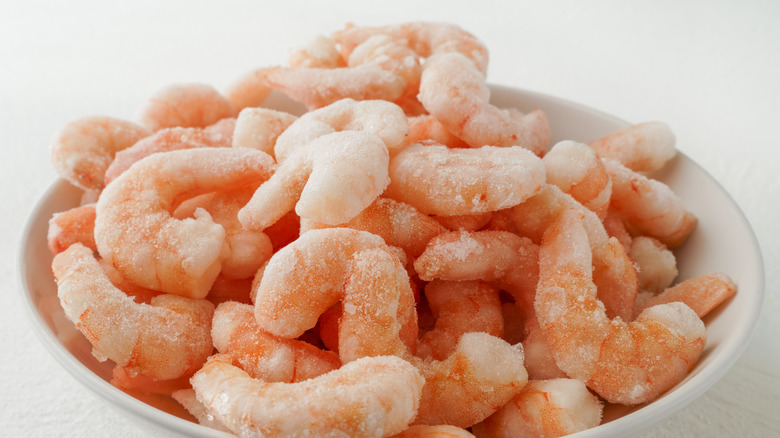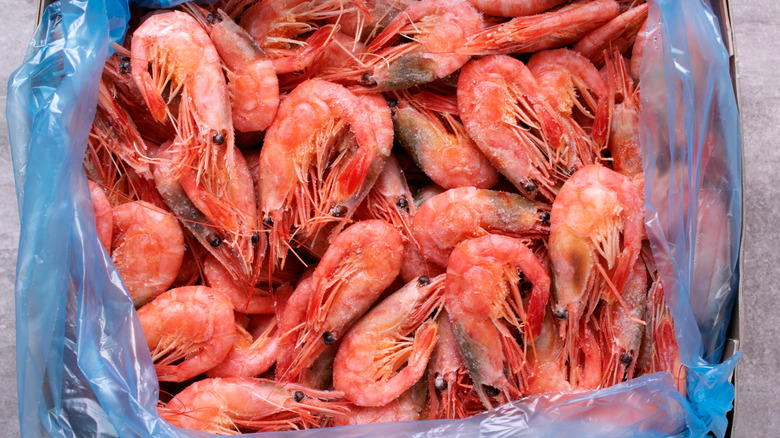How To Tell If Shrimp Has Gone Bad
Whether melted into a spicy scampi, draped onto a red-stained cocktail glass for shrimp cocktail, or crested across a bowl of cioppino, shrimp holds a special place in the hearts of cuisines from around the world. This international culinary superstar has countless methods of preparation and consumption, with many ways to add flavor to it, but all are served best, brightest, and safest with fresh shrimp.
If your shrimp has gone bad, it can do a great deal more than just offend your palate, and it's in everyone's best interest to avoid even slightly spoiled shrimp. The bodies of shrimp are home to many bacteria and viruses that can wreak havoc on the human gut if not properly cleaned and/or cooked; and there's also a risk of shrimp having parasites, putting people at risk for bacterial infection.
Foodborne illness related to shellfish can cause symptoms like vomiting, nausea, and stomach cramps, and, in the case of severe symptoms, it is vital to seek immediate medical attention. Health care professional recommendations for combating shrimp food poisoning include proper hydration and avoidance of induced vomiting and anti-motility drugs as they can worsen the situation. But there are ways to determine if your shrimp has gone bad before eating it and getting yourself into a food poisoning predicament.
The shelf life of shrimp
Like many foods, shrimp doesn't stay good forever. The exact storage life of the shellfish is dependent on whether you store it in the refrigerator or the freezer. All raw fish and shellfish should be kept in the refrigerator at below 40 F to keep bacteria at bay and should be eaten within one to two days of purchasing. Once you've cooked the shrimp, you can keep the leftovers for about three to four days in the fridge before you'll need to toss it.
In the freezer, the shrimp has an indefinite shelf life but will lose flavor and quality after about three months of purchase. This makes the freezer your best bet for long-term storage, and we recommend labeling the package of shrimp with the date it was frozen to make your freezer purges a little easier.
If your shrimp has been left out for more than two hours at room temperature, it will need to be thrown away — no questions about it. If the temperatures are above 90 F, this cutoff changes to an hour.
When to toss your shrimp
Numerous sensory cues will let you know when your shrimp needs to take a trip to the trash bin. The first is discoloration. Raw, fresh shrimp should be gray or white in color and may even appear translucent. If you notice any spots on your shrimp, it's a good idea to toss it. In contrast, cooked shrimp should have a bright pink color — not faded or gray.
You'll also order a poor odor from shrimp that needs to be thrown out. Many folks relate the smell of bad shrimp to ammonia. Good shrimp may have a lingering salty aroma or very little "fishy" smell, so feel free to open the bag and take a big whiff. Your last proxy is the texture of the shrimp. If you pick a shrimp up and it is covered in a layer of thin film or slime, then it's time to throw it out.


